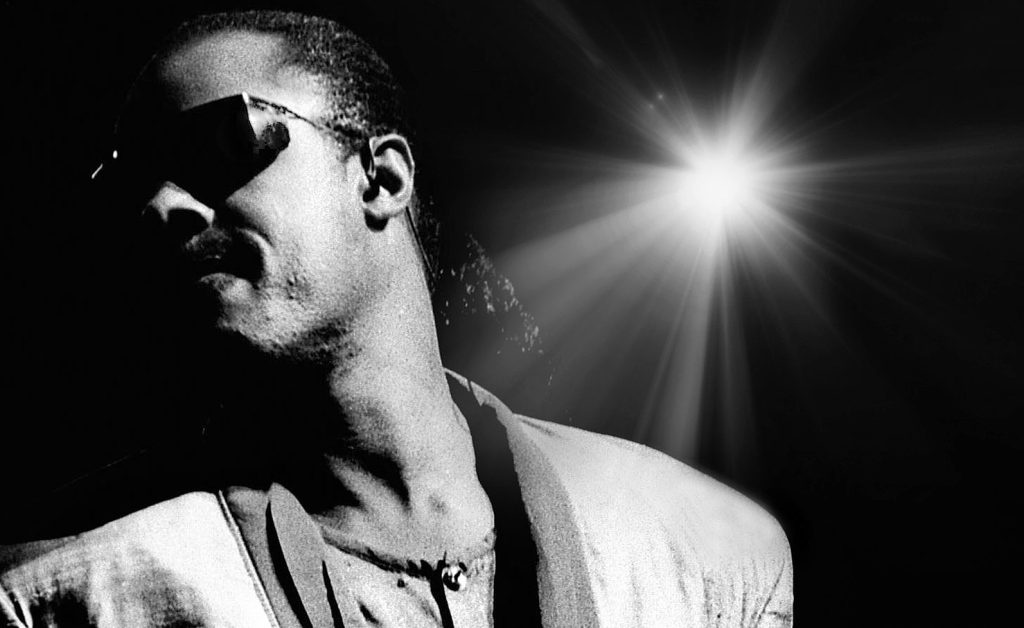Stevie Wonder’s 1972 Grammy-winning track “Superstition” leads off the second side of Talking Book. A funk masterpiece, the song features Wonder on drums as well as clavinet, bass, and lead vocal. Its central drumbeat is an exercise of a four-on-the-floor kick drum pattern with a swinging hi-hat. The snare drum backbeat and ghost notes dance with the clavinet pattern to create one of the most memorable grooves in music. Learn the background of “Superstition” and how to master its iconic feel.
Fluid Pocket
Stevie Wonder started playing piano, drums, and harmonica by age nine. As a forerunner of the one-person band, he performed almost all the parts on his albums. Wonder’s drumming is fluid and in the pocket; his parts always provide a perfect bed for the songwriting. His playing is not metronomic, yet the timekeeping always fits with the intent and lyrical content. In essence, Wonder’s groove is a testament to how great drumming can elevate a tune.
"Wonder's drumming is fluid and in the pocket; his parts always provide a perfect bed for the songwriting."
Beck and Forth
“Superstition” has a surprising origin story. As legend has it, six-string great Jeff Beck agreed to contribute to Talking Book in exchange for Wonder writing him a song. Wonder stepped out of the room during a session, and Beck sat at the drums. Upon returning, Stevie asked him to keep playing and improvised the clavinet pattern over the guitarist’s drumbeat.
“Stevie came boogieing into the studio,” Beck recalled in Annette Carson’s book Jeff Beck: Crazy Fingers. “Then the lick came out—‘Superstition,’” said the guitarist. “I thought, ‘He’s given me the riff of the century.’”
"From the opening four measures of his unaccompanied drumbeat, Stevie Wonder announces himself."
A Hit in Hiding
Wonder expected the song to debut on Beck’s album with power trio Beck, Bogert & Appice. However, that album got delayed, and Berry Gordy at Motown heard “Superstition.” The formidable label head knew a hit when he heard one, and the song debuted on Talking Book before Beck’s record came out.

How to Play "Superstition"
Taking the Pattern Apart
While dissecting the masterful drum pattern, it’s helpful to study the nuances of Wonder’s playing. The sound of the drums is up-front present—a tight funk kit that still maintains a beefy bottom for the kick and snare.
Stevie Wonder announces himself from the opening four measures of his unaccompanied drumbeat. “Superstition” begins with a half-measure flammed pickup, establishing its feel from the get-go.

The next eight measures feature a straight four-on-the-floor kick pattern. This is helpful when launching into this song, as it gives the drummer time to settle into the crucial hi-hat pattern that gets the swing going. We can see this in the opening two measures of the groove.

How to Feel It
Getting the hi-hat hand to master the swing using just one hand is a great practice exercise. To play the hi-hat part, some players, including Stanley Randolph, one of Wonder’s many drummers, approach the pattern with their right hand on the hat as Wonder did. Other drummers may opt to alternate the sixteenths between the right and left hands. If the feel is correct, the technique is secondary.
Funk Fun
After those eight measures, the real funk fun begins. The kick pattern continues with the four-on-the-floor feel. However, kick drum pick-ups now appear on the last sixteenth note of the beats. The snare starts to play around with its own pick-ups, adding ghost notes that play against the kick pattern. These two measures illustrate the interplay between the ghost notes and the kick drum.

Syncopation
Syncopation is an essential element when tackling this song. None of Stevie Wonder’s drummers played “Superstition” exactly the same. Still, the groove never strays from the original feel as long as the foot keeps the four-on-the-floor going against the swing established by the hi-hat. A drummer can establish their flavor in the accents and syncopation as the song evolves.
During the first chorus, the drums maintain the initial feel while slightly simplifying the groove.

Filling in the Cracks
The fills in “Superstition” are a testament to perfection in the inexact. In addition to the sixteenth-note rolls that punctuate the ends of phrases, the song features some of Wonder’s wonderfully idiosyncratic drum fills. For example, the fill at the end of the first chorus combines triplets and sixteen notes in an off-the-cuff feel.
More tasty playing shows up at the end of the second chorus of “Superstition.” Here, open hi-hats accentuate the vocal phrasing, followed by another spectacular fill. The song keeps driving to the finish, with the feel and groove remaining steady.
"In addition to the sixteenth-note rolls that punctuate the ends of phrases, the song features some of Wonder’s wonderfully idiosyncratic drum fills."
Infinite Lessons
“Superstition” is an excellent exercise in developing fluency with a swinging hi-hat and syncopation between the kick and snare. Like the finest drummers, Wonder’s playing offers infinite lessons in how to tell a story on a kit.
DOWNLOAD
"Black Cats!" Kit for TD-17 and TD-27
As drum intros go, there’s perhaps none more recognizable than Stevie Wonder’s “Superstition.” This kit perfectly captures the drum sound from the track, played by the artist himself on the 1972 album Talking Book.







